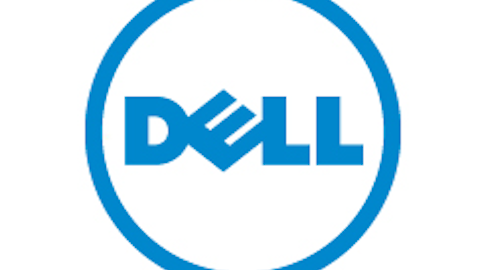The airline industry has seen many mergers in last few years. Delta-Northwest in 2008, United-Continental in 2010 and Southwest–AirTran in 2011 are few big examples of mergers in this industry. The recently announced merger between the US Airways Group, Inc. (NYSE:LCC) and the American Airlines is yet another addition on the list. What makes this merger more special is that the combined entity will become the world’s largest airline once completed. While this merger will definitely create more opportunities for the travellers; it will also have a significant impact on the other players of the industry. Some of the competitors will be benefited from the improved pricing power while others can feel the pressure of the rising competition. In this post, I am trying to analyze 3 dominant airline stocks and what will be the effect on their position because of this big development in this industry.

Delta Air Lines has been on a rally since the last six months with a return of around 58%. American Airlines’ bankruptcy filings along with the operational challenges for other major players resulted in the revenue outplay for this company in 2012.
Delta will be one of those players which will see a much lesser impact of the recent merger. The company has its eyes on the New York market to gain a higher market share there. As the US Airways has an extensive hub in Philadelphia, the newly combined entity is expected to focus more towards expanding its footholds in Philadelphia. In such a situation, Delta will be able to further enhance its position in New York. The company announced its joint venture with Britain’s Virgin Atlantic, which will help it in expanding its presence in this critical market. Delta bought 49% of stake in Virgin Atlantic from Singapore Airlines for around $360 million and both the companies have agreed to a joint venture. This deal will be a booster to the New York – London market which remains as one of the most competitive routes. Both the companies are planning to launch a total of nine daily round trip flights on this route. This joint venture will also help Delta to increase its presence at London-Heathrow.
2013 will be an important year for Delta’s shareholders, as the company is coming up with its formal dividend policy in June. The company will be achieving its net debt goal of $10 billion in 2013. Therefore, the excess of the free cash flow will flow back to the investors via dividend and share buybacks. I see Delta Airlines as a strong potential investment considering its market share gains and the upcoming dividend policy.
United Continental Holdings Inc (NYSE:UAL) – Is the worst over?
Year 2012 was a troublesome period for the company with its merger integration resulting in various operational issues. This was clearly visible in the company’s fourth quarter as well as full year results for 2012. The quarterly revenue for the company was down by ~2.5% y/y to ~$8.7 billion. The full-year EPS of the company witnessed a drastic downfall of around 54% y/y at $1.59 per share. Apart from the operational changes, the results were affected by the higher costs pertaining to maintenance and wages. I feel the recent merger of US Airways and American Airlines will have a negative impact on United Continental. The company has routes overlapping with American Airlines on various competitive hubs such as New York, Chicago and Los Angeles. Following the merger, American Airlines will give a tough fight to United to enhance its position in these markets.
However, with most of the integration issues already tackled by the company in 2012, I see 2013 to be a better year for the company along with the improving global outlook. United Continental is targeting towards lowering its costs in 2013 to improve its financial performance. It is cutting down its management and administrative headcount by around 6% in 2013. Moreover, it started a recent initiative of ~$550 million investment towards in-flight improvements for installation of flat-bed seats in premium cabins. This would be installed in around 180 aircraft in 2013 giving it the highest number of flat-bed seats among the US carriers. All these initiatives are expected to boost up the consolidated PRASM (passenger revenue per available seat) in 2013.
Southwest Airlines Co. (NYSE:LUV) – Catching up the lane
Southwest last month reported its fourth quarter and full year results for 2012. The company’s 4Q12 net income decreased by ~48%; to $78 million y/y. In spite of high fares, the profit dropped mainly due to the rising cost of labor, fuel and maintenance. For the full year 2012, the company posted profits of ~$417 million which increased by ~26% as compared to 2011. This was Southwest’s 40th consecutive year in which it was able to report profits. This came as further relief to the shareholders who already are in high spirits with the stock price regaining the lost momentum. Following the recent merger in the Airline industry, players like Southwest will be the beneficiaries. As the major big players are aiming at high-value international destinations, Southwest shall look out for the opportunities to expand its market share in the domestic market. The company is well-placed to capitalize on this opportunity because of its strong nationwide presence.
Another factor for Southwest which can be seen as the immediate revenue generator is its new innovative products. They include –
1). $40 per flight as an early boarding charge will be asked from the passengers who want to buy a preferred place in the boarding group
2). Increase in the Early Bird (automatic check-in before the traditional check-in) charge to $12.50 from the current level of $10 per one-way ticket
3). A special ‘no-show’ charge for the customers that do not inform about their no-show or cancel well on time.
4). Increase in fees for various types of checked baggage.
All these initiatives will help the company to generate an additional ~$100 million of revenue in 2013. I feel 2013 will be a fruitful year for the company with the expected benefits from the merger along with its incremental revenue generating strategies.
Conclusion
Following the recent round of the airlines merger, all the players in the industry are planning their future strategies accordingly. Both Delta and Southwest are not likely to see much of the impact of this merger in their operations. Both the companies are well-positioned with their strategic deals and initiatives aiming at higher revenues in 2013. On the other hand, United Continental will witness certain headwinds from the airline merger due to the increased competition. However, the company’s cost cutting as well as operational improvement initiatives will provide the much needed support to its earnings.
Going Macro, the global airline industry is exhibiting good signs of profitability. The airline index for the US has started the year with a 15% growth YTD in January, 2013 as compared to Europe with 12% and Asia with 5%. I believe the fundamentals in the industry should further improve based on moderate traffic growth and the improved capacity utilization. Looking at this positive outlook, this sector can be a good opportunity for the investors in 2013. With the higher revenues expected, the investors can also look out for better returns this year. I recommend a buy for Delta and Southwest Airlines. However, I am neutral on United Continental.
The article How These Companies Will Bid Against the World’s Largest Airline originally appeared on Fool.com and is written by Madhu Dube.
Copyright © 1995 – 2013 The Motley Fool, LLC. All rights reserved. The Motley Fool has a disclosure policy.



